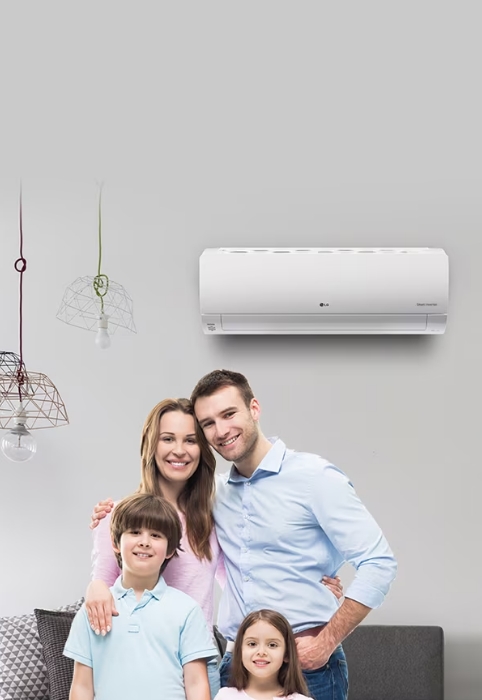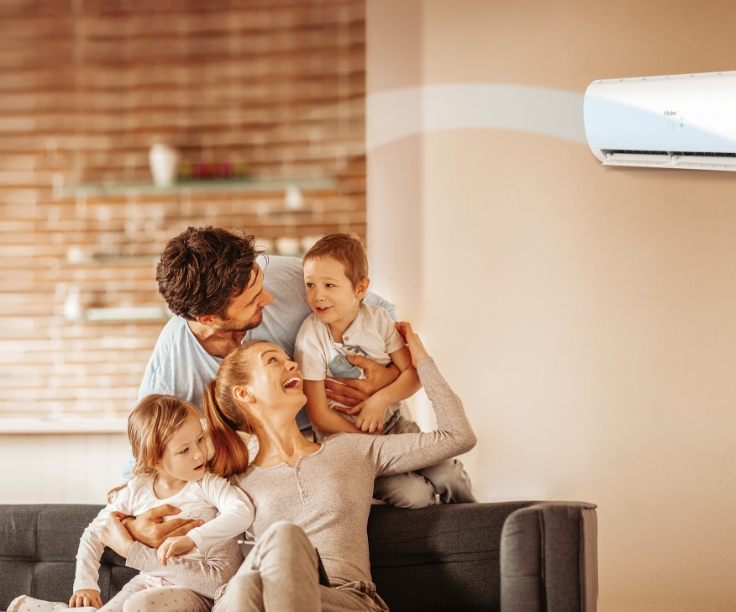What Are the Different Types of Split System Air Conditioners?

Types of split system air conditioners
Split system air conditioners generally are the most common type of system available, and it features an indoor unit and an outdoor unit that are connected via electrical tubing and wiring. These generally are installed on a wall that backs to the exterior of the home, and there is no need to have ductwork installed. While they are rather affordable in comparison to a central heating and cooling system, they can vary in price based on functional features and capabilities. There are different sized units available to accommodate various needs.
Mini Split Systems Air Conditioners
A variation of the split system heater is the mini-split system. These systems generally are more suitable for smaller spaces, and they have a smaller functional capability than a basic split system. In addition, they may be more affordable to purchase, install and operate than larger systems. These mini split systems may have enhanced functions like a low-noise operation or air filtration systems, and this makes them more sophisticated and beneficial for residential use than may styles of stand-alone systems available.
Multi-Split Systems
While a single split system may be perfect for use in one room in the home or for small spaces, it is not ideal for larger homes. However, homeowners who want to take advantage of the benefits of a split system in a larger home may invest in a multi-split system. These systems are designed to connect numerous indoor units to a single outdoor unit, but there is no need for ducts. Each indoor unit provides the homeowner with the ability to control the temperature in the specific zone. These systems are cost-effective, and they can enhance comfort in the home through zoned climate-control capabilities.
The different variations in split system heaters make it easy to select the right unit for your home at the right price. While there are different types of split system heaters that you can purchase, there are also different models available for each type of split system. If you are interested in taking advantage of the benefits of these systems, research the models available today.
Are You Split over Buying a Split System Air Conditioner? We Weigh Up the Pros and Cons for You
When summer’s at its hottest, having an air conditioner system can be a lifesaver. However, purchasing one can be tricky business. With many options available on the market, anyone can get confused quite easily. This confusion can become even bigger when you’re new to these systems. Some people choose to get window air conditioners, as they may be more convenient. However, a split system air conditioner might be a better option, as it comes with quite a few advantages. In short, these particular systems are more powerful than other air conditioners. Because of this, they can cool larger spaces. The only difference they bring in comparison to typical air conditioning units is that the air handler and the condenser are separated. This detail results in a few other advantages, but it also comes with a few costs. Let’s explore those together.
Benefit 1: Renovation? No, Thank You Very Much!
If you’re installing a window-type system, then you have to place it close to or underneath a window, as the name suggests. Not only that, but you’re also going to need to create a hole that’s big enough to accommodate the system. With a split system air conditioner, you have neither of these problems. With a split system, you have the flexibility of choosing where you want it placed; there’s no need for you to restructure your room around the system. All you have to do is get a professional to install it, so that the circuits in your home won’t be overloaded.
Cost 1: Prepare Yourself for Higher Installation Costs
Split air conditioners can’t be installed by anyone else besides a professional. Perhaps you might find it tempting to do it yourself, but you should stay away from this. The reason is that you might make a mistake, which will lead to your circuits overloading, and starting a fire. Since the risk is too high, you must call a professional. However, this also increases the installation costs.
Benefit 2: Prefer a Quiet Home? You’ve Got It!
With split air conditioner systems, you can enjoy silence indoors. Since the condenser is the source of the noise, and since the condenser is located outside, you won’t have to hear it working inside. Regular air conditioners make enough noise to wake up the dead because of their vibrations. Split systems, on the other hand, only make a humming noise, which is steady. Most people get used to it quite quickly, and after a while, they don’t even notice it.
Cost 2: The Noise Outside
Outdoor noise may or may not pose a problem for you. In fact, most people don’t think of this as an issue, since all they care about is having silence indoors. However, if you have neighbours who might be affected by the noise, then you’re not so lucky. If you’re concerned about this, it’s best to try and find out as much as possible about just how much noise the particular split system you’re about to install will make. If it won’t actually affect your neighbours, then you’re good to go.
Benefit 3: High Energy Efficiency
One of the most important things people look for in an air conditioner system is its energy efficiency. Regular air cooling systems can pose an issue in this regard because they have places where leaks can occur. For example, the big hole in the wall that was required in order to install a normal system is one such place. Leaks occur when there are places where cool or hot air can escape. In such cases, the air conditioner system has to work more in order to compensate, thus wasting energy. Since split air conditioners don’t provide spaces for leaks, they are more energy efficient.
Cost 3: There is Still Some Energy Loss
Nothing is perfect. This idea also applies to split air conditioner systems when it comes to energy. Despite the fact that they are more energy efficient than regular systems, there will still be some waste. This occurs through the ducts connecting the condenser and the air handler. Some energy is wasted through that pathway. However, it isn’t enough to pose a real problem, especially when comparing to the energy wasted by regular systems.
All in all, split air conditioners have an edge over the competition. Despite the fact that they come with their own set of costs, these costs pale in comparison to the benefits. While you will have to employ a professional to install the system and incur a bigger cost in the process, this cost will end up paying itself off because of the system’s energy efficiency. Also, moving the noise from indoors to outdoors is a pretty good deal.







